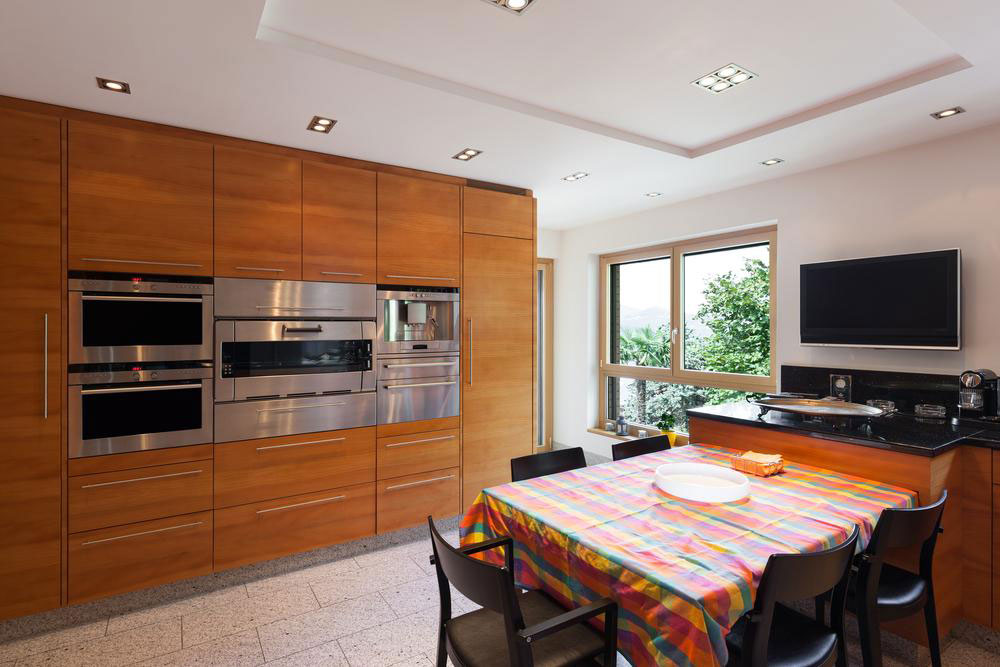Guide to Choosing Between Curved and Flat Televisions: Find the Perfect Screen for Your Space
Discover the key differences between curved and flat televisions and learn which option is best suited for your viewing environment. This guide explores their design, immersive experience, viewing angles, glare issues, and performance features. Find out which TV type enhances your home entertainment, fits your decor, and offers the best value. Make an informed decision with expert tips on choosing the right TV for your space and lifestyle. Explore the advantages and disadvantages of each to elevate your home theater experience today.

Guide to Choosing Between Curved and Flat Televisions: Find the Perfect Screen for Your Space
In the rapidly advancing world of home entertainment, television technology continues to evolve at a remarkable pace. Over recent years, one of the most noticeable trends has been the emergence of curved screen televisions, which have gained popularity alongside the classic flat-screen models. With numerous options flooding the market, consumers often find themselves questioning: which type of TV best suits their needs and preferences? This comprehensive guide delves into the critical aspects of both curved and flat screens, helping you make an informed decision tailored to your viewing habits, room setup, and aesthetic desires.
As leading electronic brands release innovative models, it’s important to consider how each design impacts your viewing experience. Curved televisions are designed to create a more immersive experience, often giving viewers a sense of depth and encompassing visuals. Conversely, flat screens remain the traditional choice, known for their crisp picture quality and ease of placement. Both options have their advantages and potential drawbacks, making it essential to evaluate key factors such as visual appeal, viewing angles, glare reflections, and compatibility with your living space.
Design and Aesthetic Appeal
When it comes to aesthetics, the choice between curved and flat screens largely depends on personal taste and the style of your home decor. Curved TVs boast a sleek, modern appearance with a distinctive curvature that draws attention and adds a high-tech feel to a room. They often create a futuristic look that complements contemporary interiors. Flat screens, on the other hand, offer a more traditional appearance that seamlessly blends into various decor styles due to their minimalist design. If you are aiming for a visually striking centerpiece in your lounge or media room, a curved TV might be the more appealing option. However, for a more understated and versatile look, flat screens may suit your space better.
Immersive Viewing Experience
The primary advantage of curved televisions lies in their ability to deliver an enhanced, immersive viewing experience. By extending the natural curvature of the screen toward the viewer, curved TVs reduce distortions at the edges and provide a more uniform viewing experience. This design can make movies, sports, and gaming sessions more engaging by wrapping the picture around your field of vision, creating a near-theater experience. It's particularly beneficial in larger screens where the curvature helps maintain consistency in picture quality across the entire display.
Viewing Angles and Picture Clarity
When selecting a TV, viewing angles are a critical consideration, especially in multi-usage spaces or larger households. Curved screens tend to perform well when viewed directly from the front, but their picture quality can diminish when viewed from sharp angles. This means that if your seating arrangement involves multiple viewers sitting at various angles, a flat-screen television might deliver better consistency in color and brightness across the audience. Flat screens provide wide viewing angles, ensuring that everyone gets a clear and vibrant picture regardless of their position in the room.
Reflections and Glare
In homes with abundant ambient lighting or large windows, reflections and glare can impact your viewing experience. Curved screens are often more susceptible to reflections due to their convex shape, which can cause glare from light sources coming from different directions. Manufacturers have improved the anti-reflective coatings on many newer models, but reflections can still be a concern. Flat screens generally reflect less ambient light, making them better suited for bright rooms or spaces with multiple light sources. To optimize your viewing comfort, consider your room’s lighting when choosing between the two.
Performance and Screen Quality
Leading brands like LG, Samsung, Sony, and others offer a range of innovative models in both curved and flat configurations. When investing in a curved TV, look for features like OLED or LED displays, 4K or 8K resolutions, HDR support, and advanced image processing for stunning picture clarity. OLED technology, in particular, provides deep blacks and vibrant colors, enhancing your overall viewing experience. Flat screens also come with similar specifications, offering excellent picture quality suitable for high-definition content. The choice ultimately depends on your preference for design and how you prioritize viewing features.
Price and Availability
Pricing for curved and flat televisions varies based on size, resolution, brand, and features. Currently, flat screens tend to be more widely available, with a broader range of options and often more competitive pricing due to their long-standing popularity. Curved models are slightly more niche, but premium brands offer a variety of high-end options, especially in larger sizes and advanced technologies like OLED screens. Keep an eye out for sales, discounts, and promotional offers during holiday seasons or special retail events. Buying during a promotional period can significantly reduce costs and offer you access to the latest models at more affordable prices.
Final Considerations and Recommendations
Choosing between a curved and flat television is ultimately a matter of personal preference, room layout, and viewing habits. To make the best decision, assess your space, seating arrangement, lighting conditions, and aesthetic preferences. If you desire a cutting-edge, immersive experience and your room design complements a sleek, curved display, investing in a curved TV might be the best choice. On the other hand, if you prioritize consistent image quality from various angles, ease of placement, and generally brighter environments, flat screens are an excellent choice.
In conclusion, both curved and flat televisions have unique strengths that cater to different needs and lifestyles. When shopping, consider comparing models from top brands, reading customer reviews, and evaluating all the features to find the perfect match for your entertainment setup. Keep an eye out for special deals and offers to get the most value for your investment. Whether you opt for the futuristic appeal of a curved screen or the classic reliability of a flat TV, modern technology ensures you will enjoy an exceptional viewing experience at home.





